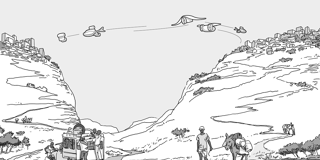Unmanned aerial vehicles have populated the nightmares of people around the world in recent years, largely owing to their military and potentially malign applications. But cargo drones embody what the World Bank’s Jim Yong Kim calls the “science of delivery,” promising to get essential goods and services to the neediest people.
LAUSANNE – Unmanned aerial vehicles have populated both the imagination and nightmares of people around the world in recent years. In April, the United States Navy announced an experimental program called LOCUST (Low-Cost UAV Swarming Technology), which officials promise will “autonomously overwhelm an adversary” and thus “provide Sailors and Marines a decisive tactical advantage.” With a name and a mission like that – and given the spotty ethical track record of drone warfare – it is little wonder that many are queasy about the continued proliferation of flying robots.

LAUSANNE – Unmanned aerial vehicles have populated both the imagination and nightmares of people around the world in recent years. In April, the United States Navy announced an experimental program called LOCUST (Low-Cost UAV Swarming Technology), which officials promise will “autonomously overwhelm an adversary” and thus “provide Sailors and Marines a decisive tactical advantage.” With a name and a mission like that – and given the spotty ethical track record of drone warfare – it is little wonder that many are queasy about the continued proliferation of flying robots.